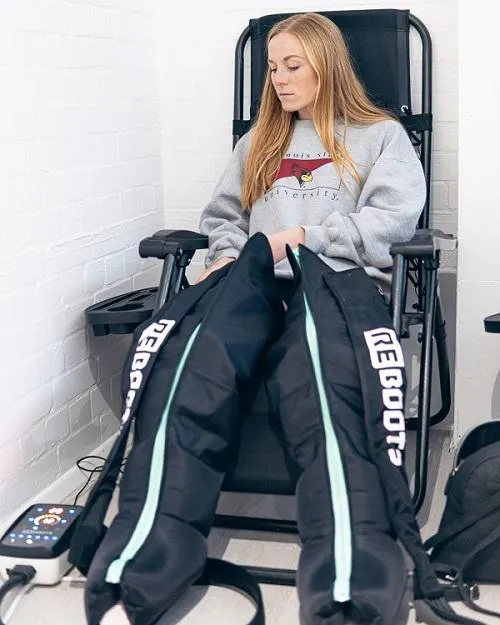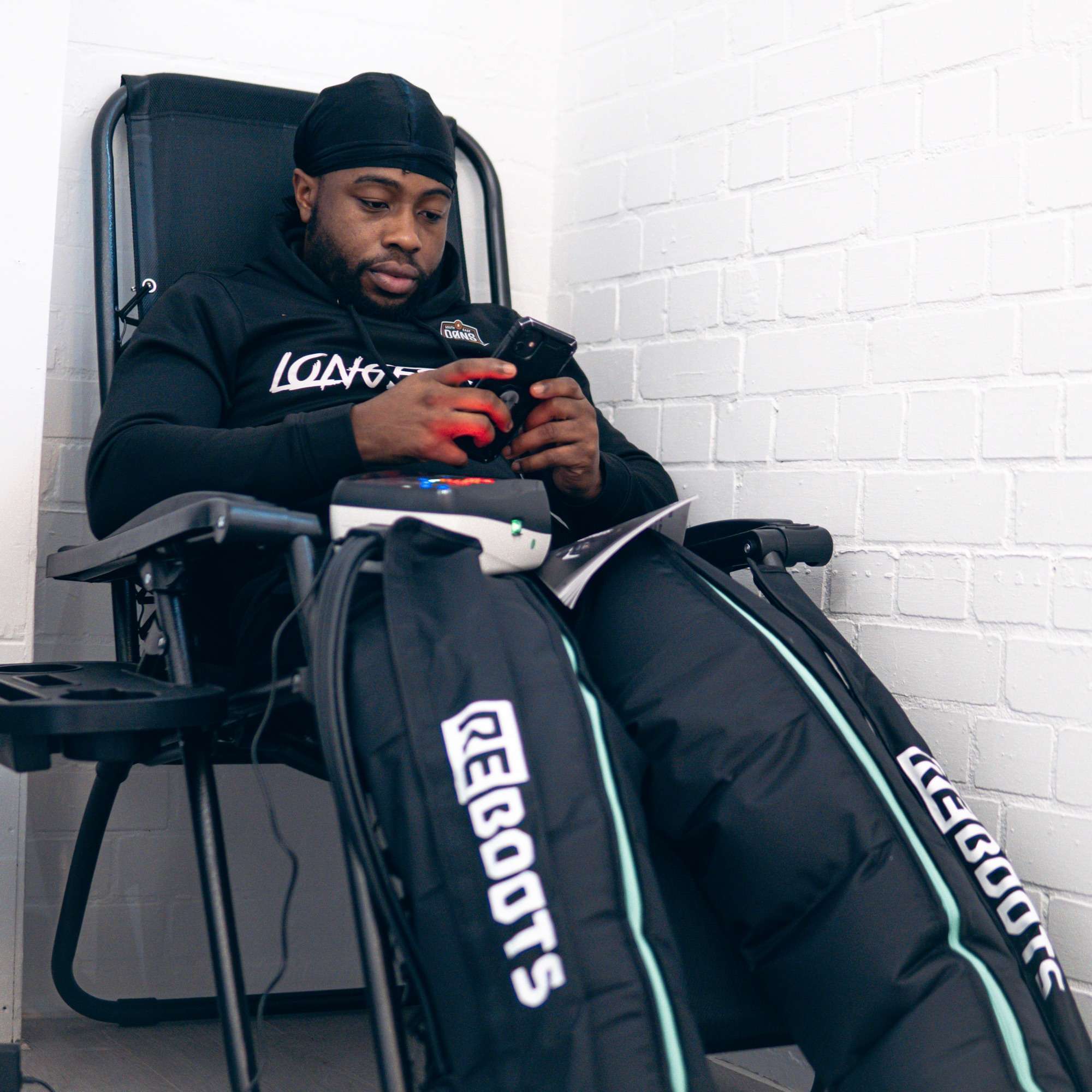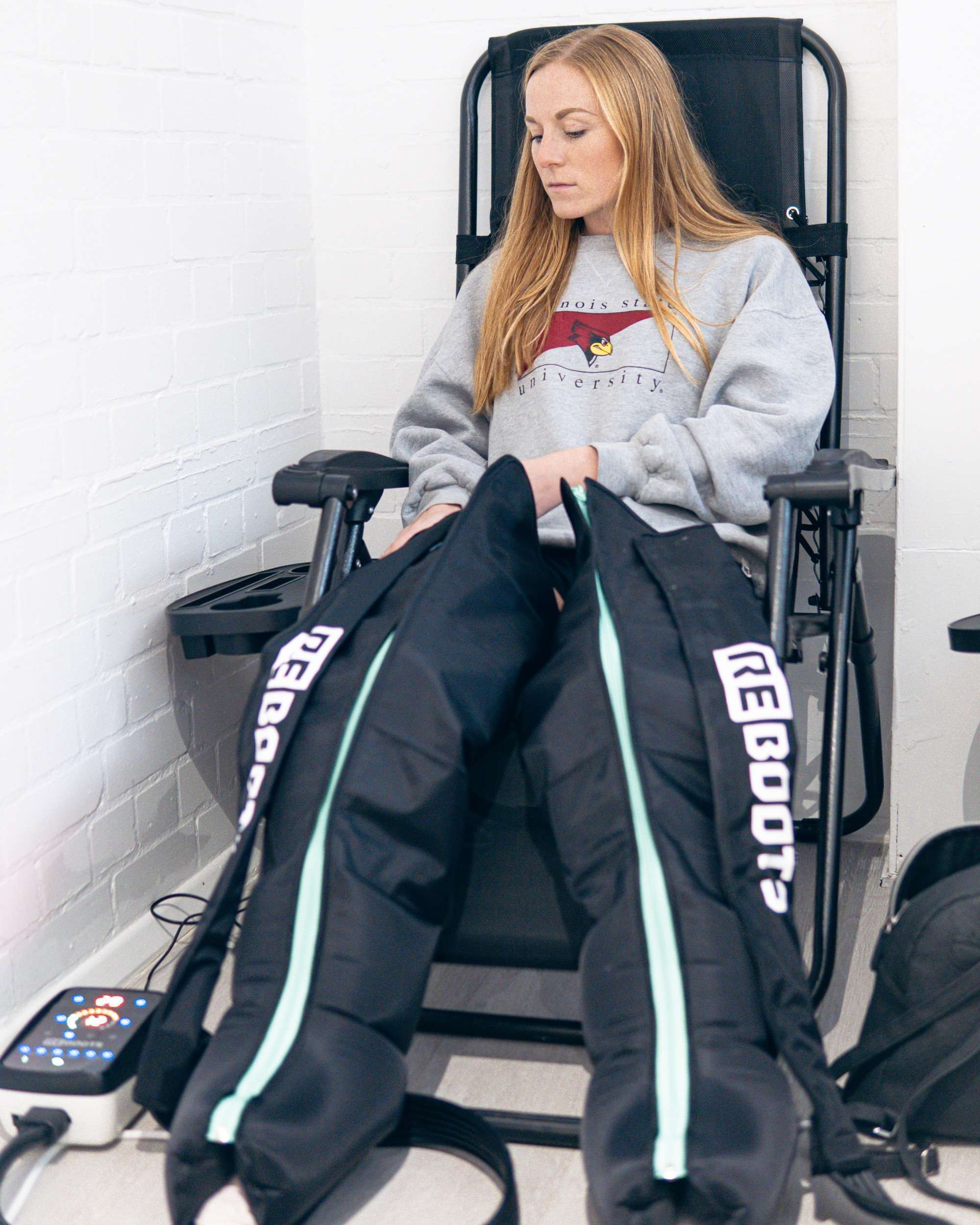REBOOT COMPRESSION BOOTS
Stimulates your body’s natural muscle pump with our compression boots massage. This fitness favourite eliminates toxins and metabolites that can prolong muscle soreness and delay recovery. The heaviness caused by intense workouts is relieved through a compression and decompression technique that combines both intense muscle recovery and healing.
There are many different types of recovery boots on the market, but the three most popular brands are compression boots, normatec recovery boots, and leg recovery boots. All three of these brands offer a boot massager, which is a great way to reduce soreness and improve circulation.
Compression boots are a type of compression therapy that can be used to treat a variety of conditions, including venous insufficiency, lymphedema, and edema. They work by applying gentle compression to the affected area, which helps to reduce swelling and improve circulation. Bromley is a great place to find compression boots, as there are a number of reputable retailers that sell them. If you’re not sure which type of compression boot is right for you, be sure to consult with a healthcare professional before making a purchase.
All three of these brands of recovery boot are great for reducing soreness and improving circulation. If you are looking for a recovery boot, you should choose the brand that best suits your needs.
A deep tissue massage is a type of massage that focuses on realigning deeper layers of muscles and connective tissue. It is especially helpful for chronic aches and pains or contracted areas such as stiff necks and upper back, low back pain, leg muscle tightness, and sore shoulders. Some of the same strokes are used as classic massage therapy, but the movement is slower and the pressure is deeper and concentrated on areas of tension and pain.
Area: Legs, hips, arms
Legs, hips, amrs
All three brands i.e. compression boots, normatec recovery boots, and leg recovery boots are effective to treat soreness and enhance circulation. You can choose any recovery boot brand as per your requirement.
Area: Legs, hips, arms

FAQs
What Are Compression Boots?
Compression boots are multi-chambered, hollow, fabric boots that cover the feet, thighs, and lower legs. They are a sort of recovery gear that applies pressure to your legs using pneumatic compression to aid with blood flow and inflammation reduction. These boots typically consist of a pair of sleeves that are worn over your legs and attached to a device that inflates the sleeves when the machine is turned on.
Intermittent pneumatic compression, or IPC, is the procedure that doctors have long used to lessen swelling in the legs and feet of patients with critical medical disorders such as lymphoedema, deep vein thrombosis, or pulmonary embolism.
What Is The Science Behind Compression Boots?
Compression boots aid in bringing deoxygenated blood from the lower body back to the heart in edema patients. It nearly feels like squeezing toothpaste from the bottom of a tube. Similar principles control intermittent pneumatic compression in athletes, though the material in question isn't only blood. It contains post-exercise inflammation.
In order to create an environment that is conducive to muscular healing and recovery, compression boots help move the body's "bad" metabolic waste products from the lower leg back into the circulatory system where they can be pumped throughout the body and replaced with "new" and "freshly" oxygenated blood.
How Do Compression Boots Work?
Athletes and fitness enthusiasts may benefit from compression boots in a number of ways. Here are just a few ways that wearing compression boots might aid in a quicker recovery and improved performance.
Improved Blood Flow: Compression boots can aid in enhancing blood flow, which will aid in more effectively supplying your muscles with nutrients and oxygen.
Reduced Inflammation: Compression boots can help decrease inflammation by exerting pressure on your legs, which helps speed up your recuperation.
Increased Range of Motion: Compression boots can help you increase your range of motion, which will make it simpler for you to walk around and carry out workouts.
Faster Recovery Times: Compression boots can speed up your recovery after an exercise or sports event by improving blood flow and lowering inflammation.
Are Recovery Boots Effective?
While it has been shown in several studies that intermittent pneumatic compression enhances lower-body blood flow, there is less established—and occasionally contradictory—research on how this affects training recovery.
Compression devices, for instance, may assist maintain flexibility and reduce muscular discomfort in the days after challenging strength training sessions. Nevertheless, long-distance runners reported no advantage in lowering delayed onset muscle soreness.
Although intermittent pneumatic compression may offer temporary relief from delayed onset muscle soreness in athletes, it is likely to have little effect on the indicators of exercise-induced muscle damage.
Perhaps, depending on the athlete and their mindset.
It is impossible to overstate the importance of psychological pain and mental buy-in. Whatever the physiology or process may be, wearing the boots unquestionably causes something to happen, and this alone is of great importance.
Who Can Benefit From Compression Boots?
Compression boot proponents contend that the boots lessen swelling, water retention, and muscular tension by assisting the body in flushing out metabolic waste products (like lactate) after exercise. Also, they can speed up the recuperation process and boost exercise performance by allowing molecules that repair tissue to flood into the injured muscles.
It's crucial to understand, however, that the body does this action spontaneously and without assistance from outside sources after every workout. Other rehabilitation therapy methods, such as yoga and foam rolling, have also been found to be beneficial through some of the same processes.
So, compression boots are unlikely to significantly enhance performance for the vast majority of athletes—especially those who already receive enough recuperation time in between training sessions.
So, compression boots are unlikely to significantly enhance performance for the vast majority of athletes—especially those who already receive enough recuperation time in between training sessions.
Yet for athletes who are highly skilled or professional, it may be the difference between success and failure—or even between damage and harm. Several of these athletes work beyond what their bodies are capable of. Every little bit matter when an athlete only has a few hours to recuperate in between workouts or tournaments.




